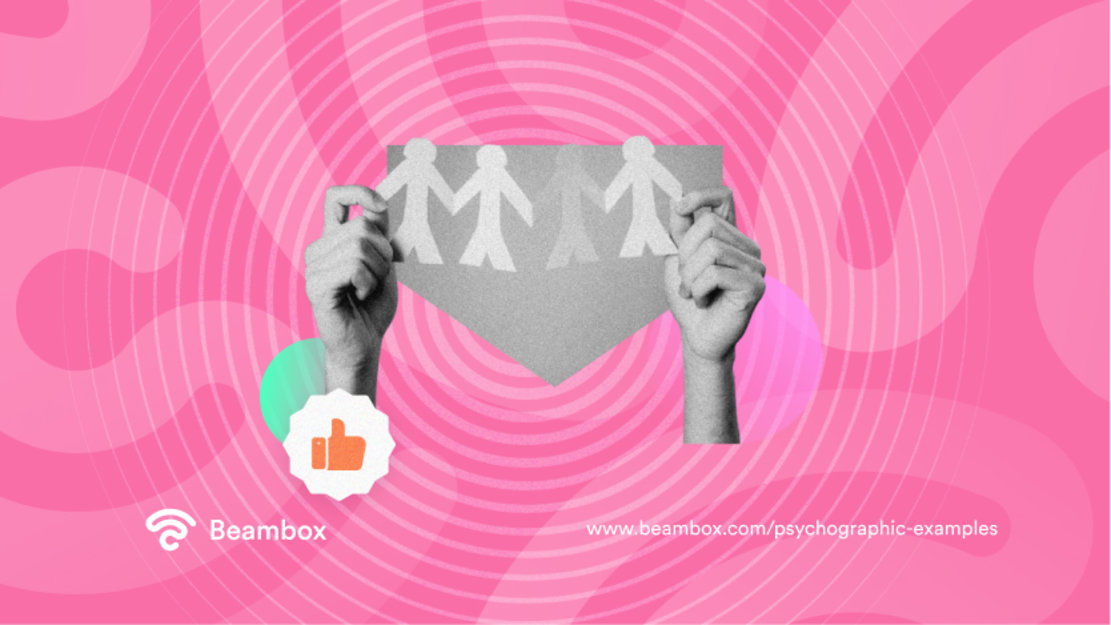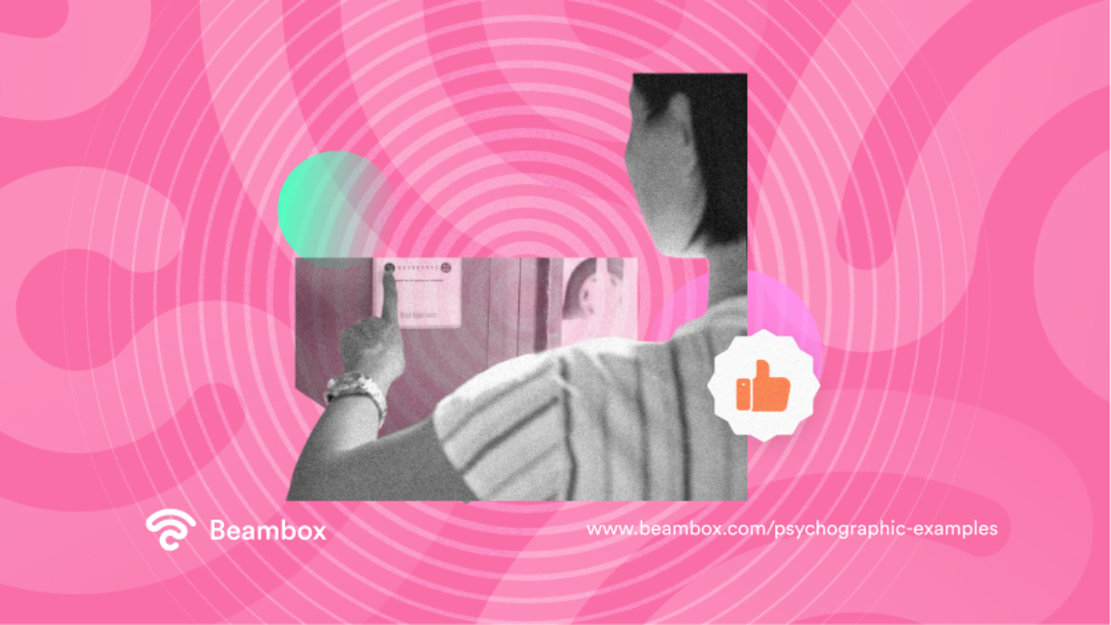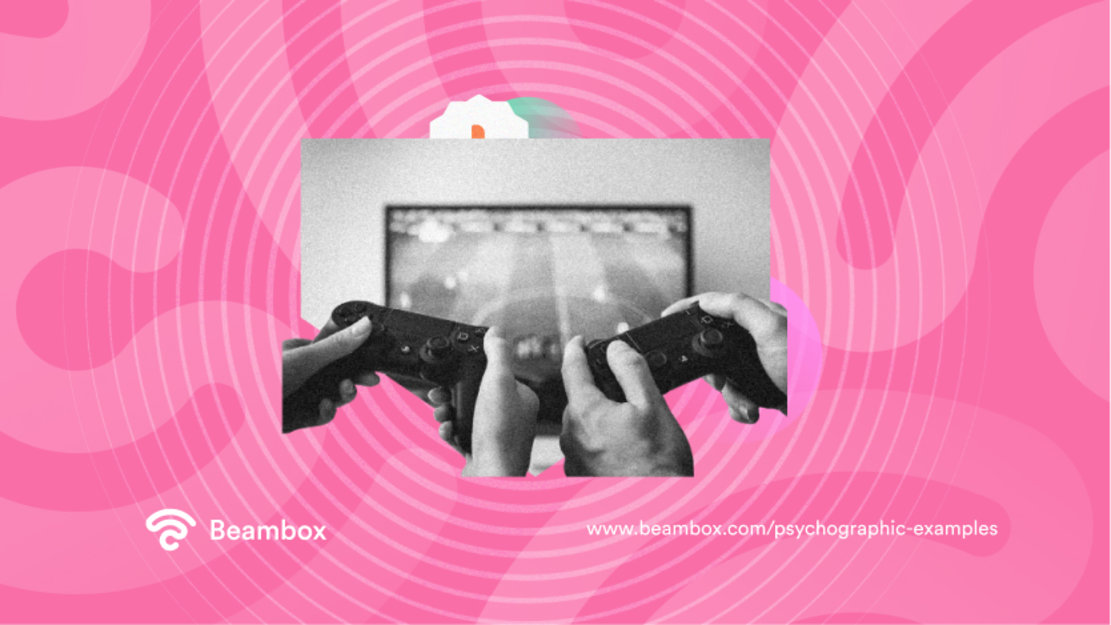Psychographic Examples for Accurate Customer Segmentation
Being a business owner, you’ve probably already heard about customer segmentation. But it’s not just the demographics that set customers apart from each other. Psychographic examples paint a clearer picture of who your customers are and why they’re buying your product.
But does this information really matter? Well, when you know what drives people’s buying decisions, you can position your product to align with those reasons. The result will be more than just increased sales.
With nine types of segmentation models, it’s easy to confuse one type with the other. Learning examples is the only way to take away that confusion. For the sake of this article, we’ll focus on the psychological aspect.

What Is Psychographic Customer Segmentation?
Let’s start by understanding what psychographic customer segmentation is. It’s a marketing strategy where you categorize customers based on their psychological and lifestyle characteristics.
On the other hand, demographic segmentations look at factors like age, location, gender, income, etc. While these factors help to some extent, this segmentation isn’t very specific.
But with psychographic segmentation, everyone has different beliefs and opinions that rarely change.
Plus, it is even more effective than behavioral segmentation because behaviors keep changing. An example of behavioral segmentation is that of an emotional buyer. This customer will make purchases following his emotions.However, if a person looks for rational reasons to buy a product, they will rarely make an impulse purchase. Therefore, behavioral segmentation might have shortcomings relevant to your business.
Learning how people think and feel gives you control that you can use to shape your sales.
Additionally, psychographic marketing segments depict a clear idea of how your potential customers communicate. In return, they’ll be more willing to talk to you when you use their preferred language for communication.
Improved communication is one of the best ways to resolve issues and make customers loyal.
But the problem is this type of data is hard to find. With the limited data you get, you won’t be able to learn as much as you’d like. Plus, if you start making assumptions with that data, you might end up with errors. That will do more harm than good.
How Do You Get the Data for Target Market Psychographics Examples?
Now that you know what psychographic segmentation is, let’s see how you can get data for target market psychographic examples. As mentioned earlier, it’s not always easy to find this data.
But if you use the right methods and pay attention to the right people, you can learn a lot. Here’s how:
- Surveys and Questionnaires: When there’s a question about collecting customer data, surveys and questionnaires come to mind. You can either send out physical surveys or online forms. But keep your questions short and let people know exactly why you’re asking them.
- Interview Existing Customers: When it comes to getting accurate information, existing customers are your best bet. They’ve already interacted with your brand, and you’ve built a reputation with them. So it would be easy for them to open up to you.
- WiFi Analytics: If you don’t want live interactions or if very few people are responding to your surveys, use your WiFi. By implementing a WiFi marketing solution, you can gather data from your customers based on their use of the internet. It will give you a holistic view of your customers.
- Focus Groups: These are groups of people who haven’t interacted with your brand but closely relate to your target audience. They have to give unbiased opinions so you can figure out how your actual customers might behave. However, this method may not be entirely accurate.
- Market Research Companies: There are dedicated companies that conduct market research. They have data on customers from various industries that you can buy. However, this option might be expensive.
What Are Examples of Psychographic Customer Segmentation?
Surveys have revealed that segmented, targeted campaigns bring 77% of marketing ROI. Does this mean general marketing campaigns won’t bring you any good? No, it will.
But it won’t be as effective as personalized campaigns that show your customers exactly what they want to see. Now, demographics will tell you where to sell your product or service. But they won’t tell you how to sell it. For that, you’ll have to use psychographics.
So, here’s the answer if you’re asking yourself, “What are examples of psychographic customer segmentation?”
See What Their Personality Traits Are
Personality traits tell you what type of person you’re dealing with. Are they calm, easily frustrated, hard to please, or understanding? This information will also help you resolve any issues that might occur in the future.
These traits also tell you if a person makes impulse purchases or spends a lot of time researching before buying.
But how does that help you? Well, if you find most of your customers making impulse purchases, you can rely on FOMO. It is the fear of missing out that people get when there’s a limited-time offer or discount. Seeing such an offer, people with this personality won’t be able to resist buying your product.
On the other hand, show testimonials and explain the benefits of your product for the second group.
Help them during their research so they’re ready to buy at the end of it. This doesn’t mean you should contact them personally and manipulate them into buying. Just create marketing campaigns that will convince them your product is something they need.
However, those aren’t the only personality traits you’ll encounter. Introverts, extroverts, idealistic, realistic, organized, agreeable, neurotic, dreamers, doers, leaders, followers, etc., are also part of psychographic segmentation examples.
Plus, there might be some people who prefer functional features over aesthetics and vice versa. So, make campaigns accordingly.

Customer Lifecycle Stage Also Plays a Role
The second psychographic example is the customer lifecycle stage. People rarely make buying decisions as soon as they come across your brand.
Usually, they spend some time researching your brand, products, and reviews. Only once they’re happy with what they see do they make a purchase. This means that they cover a long journey to become a customer.
This customer journey has five common stages. The first one is awareness, where the customer knows little to nothing about your business.
The next stage is when the person knows your product and starts considering a purchase. After that, they transition to the decision stage, where they’re no longer considering. Here, they make a decision about whether or not they will buy your product.
After that, there are two possibilities. The person’s journey either ends because they didn’t become a customer. Or they become a customer and start showing up regularly, becoming loyal to your brand.
In the second case, the journey continues with advocacy, where loyal customers recommend your brand to others.
Your marketing approach at each stage of the customer journey should be different. That’s why knowing where the customer stands is so important.
For people in the awareness stage, create landing pages, paid ads, social media posts, and influencer partnerships. The main goal here is to bring your brand in front of their eyes as many times as possible.
Once they’re aware, show them educational content, guides, and YouTube videos to guide them to a decision.
Then, convince them with comparison content, social proof, reviews, case studies, etc. But you wouldn’t want them to leave your brand after the first purchase.
To make them loyal customers, launch loyalty programs, exclusive discounts, review requests, surveys, etc. After these marketing stages, give them referral rewards and recognition.

Social Status Can Tell You a Lot
Whether or not customers will buy your product or service also depends on their buying power. If they don’t have enough budget, no amount of marketing will be able to convince them except discounts. So, social status is another psychographic example to help you segment customers.
Let’s give some examples to understand this. A person belonging to an upper-class family will buy a luxury watch because they only wear such watches. But if a person from the middle class buys such a watch, they might want to show themselves rich.
The motivation for each customer is different, so you have to act accordingly. A campaign for the upper-class person can include features of the watch. But to convince the middle-class person, portray the watch as a status symbol.
Additionally, customers’ motivations also depend on their marital status. A married person with a family might buy a large car to fit everyone. They’ll be looking at its functionality.
But a single person’s motivations will be different. They might find the car attractive, or they might buy it to look richer.
Moreover, if most of your customer’s profiles belong to the middle and lower classes, you’ll have to launch discounts. That way, you’ll make it easier for them to buy from you.
Now, while upper-class people also enjoy discounts, they won’t be driving their decisions. They need to see features and benefits. If your product provides value for money, they’ll have no problem investing.

What Are Their Activities, Hobbies, and Opinions?
How people spend their spare time says a lot about their psychological characteristics and how they see the world. Budgeting and spending money are part of this, so knowing your customers’ activities can help you shape your campaigns.
For example, you own a restaurant, and many of your customers are readers. You can create a quiet corner for them where they can enjoy your food and their book in peace.
Or create games and contests if many of your customers like spending time on social media.
Engaging people with such things and rewarding them for winning will make them loyal customers.
But remember, people usually take part in more than one activity. So, try to find a theme and then combine those activities to get the most effect.
Moreover, look at your customers’ attitudes and beliefs. Extending the example above, some customers want convenience, while others prefer healthy food.
Or some of your customers might believe in sustainability. Knowing these things about your customers, you can launch campaigns that melt their hearts.
Use Psychographic Segmentation To Create More Effective Campaigns
Psychographic examples are more than just personality traits. They’re a person’s beliefs, attitudes, opinions, and more. Unlike behavior, these traits rarely change. So, psychographic segmentation has a longer shelf life. You can leverage these traits to grow your business and improve the loyalty of your customers.
If you are looking for a platform that helps you with:
- Gathering data
- Running marketing campaigns
- Managing and growing your online reputation
Try out Beambox. This WiFi marketing platform has no hidden fees and requires no additional hardware. Over 12,000 businesses are using it to stand out and grow in their market. Start your free trial today!
Get Started With Free WiFi Marketing
Beambox helps businesses like yours grow with data capture, marketing automation and reputation management.
Sign up for 30 days free


